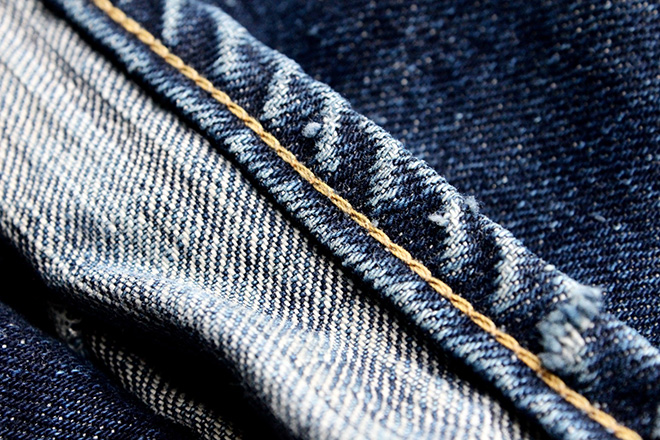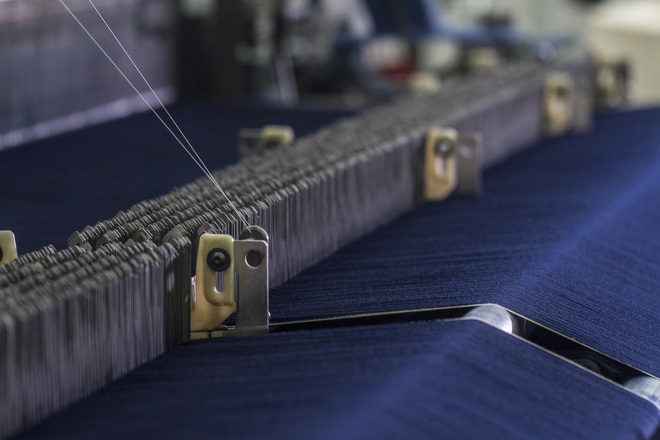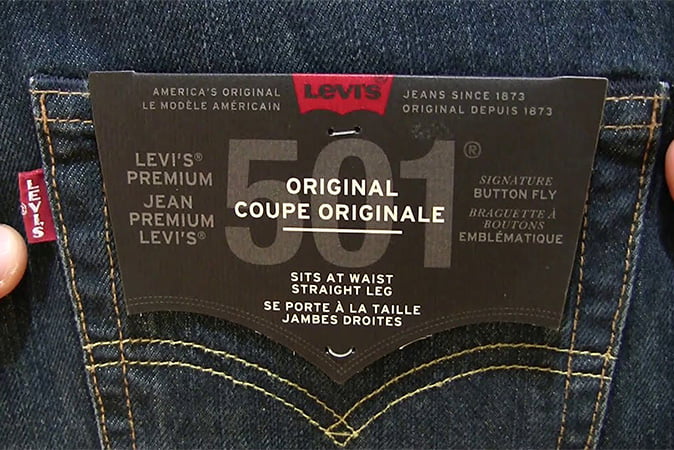What is Denim? Interesting Facts About Denim

Denim is basically a textile that is sturdy and durable. This fabric is made of cotton fiber with a twill weave technique. Denim material is generally used in the manufacture of clothing. But lately, we often find alternatives such as application-based textiles in seat covers, cell phone covers, insulating textiles, etc.
The word 'denim' comes from the French "serge de Nimes", the name given to a cloth that originates from the city of Nimes. The use of denim fabric has been around since the 17th century. In the 1800s, the need for strong, durable fabrics for mining workers led to fabrics being created.
Levi Strauss and Jacob Davis jointly created denim pants, which are made of a durable fabric and reinforced with rivets at high-pressure points to extend their life.
In the 1950s, denim became an expression of rebellion for the younger generation. The rest is history, now, when denim was nothing more than an expression, but an essential part of everyone's wardrobe.
Denim Fabric Manufacturing Process

The process of making cloth begins with cotton harvesting, ginning, and processing into bales. The bales are then separated into small tuffs, which then go into the carding. The carded cotton is then converted into a sliver, which goes to a spinning machine that forms the yarn from this sliver.
Part of this yarn is then dyed, traditionally in a chemically synthesized indigo dye to give denim blue color. The dyed yarn is then 'cut' by coating it with sizing to make the yarn stronger and stiffer.
The dyed thread and white thread are then woven into the final denim fabric, where the blue thread forms a warp, which is packed closer than the weft thread to give the fabric a more blue color.
After weaving, this fabric is ready for finishing processes such as removing loose threads, removing fibers, and skewing. The resulting fabric is then rolled into a roll of fabric that is ready to be shipped.
At the garment stage, these fabrics are stacked in layers and cut into the desired pattern, which is then sewn depending on the design requirements. The sewn garments are then sent to pre-wash or stone washes as needed.
Prewashing is done to make denim softer, using industrial detergents. While stone washing gives clothes a sought-after faded look. Sand or chemicals are also used in the washing process to create the worn look the design demands.
The jeans are then packed according to the packing requirements and shipped.
Advantages Of Denim
 Denim fabric is widely used as a material for making jeans pants because of its strength and durability. Traditionally, denim is woven with only cotton, but when it is mixed with polyester, the shrinkage and wrinkles of the fabric are reduced. The addition of lycra adds stretch to the fabric. This fabric has poor color fastness, and its thickness often makes it relatively difficult to maneuver in sewing operations
Denim fabric is widely used as a material for making jeans pants because of its strength and durability. Traditionally, denim is woven with only cotton, but when it is mixed with polyester, the shrinkage and wrinkles of the fabric are reduced. The addition of lycra adds stretch to the fabric. This fabric has poor color fastness, and its thickness often makes it relatively difficult to maneuver in sewing operations
Patent In Denim
 The first patent for 'Blue Jeans' went to Jacob W. Davis, together with Levis Strauss & Co. on May 20, 1873. The patent is specifically for fastening copper rivets used for denim pants.
The first patent for 'Blue Jeans' went to Jacob W. Davis, together with Levis Strauss & Co. on May 20, 1873. The patent is specifically for fastening copper rivets used for denim pants.
In 2017, Nike patented "architecturally reinforced denim". The denim under this patent has moisture management properties, and stretch material, and the garment will have a performance zone to make denim attractive to extreme athletes such as skateboarders and BMX riders.
Recent Advances In Denim
Denim is quite popular, but the recent athleisure trend has resulted in a decline in global demand for denim. A new brand called Acynetic is in line with this healthy lifestyle and offers a denim line consisting of both knitted and outerwear, where indigo yarn is combined with spandex through a circular knitting machine, resulting in seamless stitching and a more comfortable fit.
Denim manufacturers have used Lycra in denim for years. However, Invista has introduced a new knit denim technology, known as Lycra Hybrid, which promises to further increase the amount of stretch and comfort that traditional Lycra offers. In addition, dualFX Lycra, highly elastic denim, and bi-stretch denim are also some of the innovations they developed.
Denim And Its Relation In The Sustainable Fashion Industry
The fashion industry is the second-largest polluter after the oil and gas industry. This has forced the industry to make efforts to reduce its environmental footprint. VSEP technology is a step in that direction.
VSEP has long been used in sanitation and filtration processes. This technology is now used in the textile industry, where vibrating membranes are used to remove indigo dyeing chemicals from water bodies, and reverse osmosis results in water purification.
Through this process, 100% of the discarded indigo dye can be reused, and 70% of the water used can be recycled.
In the sustainable fashion line, biodegradable synthetics and bio elastomers, man-made alternatives to cotton, hemp, or linen in the form of lyocell, and Refibra are some examples of raw materials used in denim in search of more sustainable alternatives. for raw materials